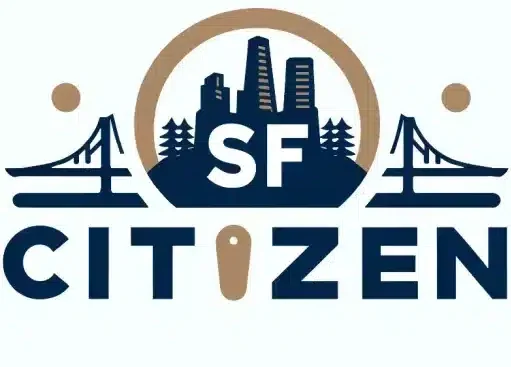San Francisco has implemented various traffic calming measures to improve safety and livability in residential neighborhoods. These initiatives aim to reduce vehicle speeds, minimize cut-through traffic, and create a more pedestrian-friendly environment.
In This Article
Key Points
- Physical devices like speed humps, curb extensions, and traffic circles are widely used to calm traffic on residential streets.
- These measures have led to lower vehicle speeds, fewer accidents, and improved quality of life for residents.
- The city plans to expand traffic calming efforts, particularly in areas with high pedestrian activity and near schools.
Historical Context and Rationale
San Francisco’s dense urban environment and narrow streets have long posed challenges for pedestrian safety. In the early 2000s, the city witnessed a concerning rise in traffic-related incidents, prompting calls for action to protect vulnerable road users, especially in residential areas.
In response, the city adopted a comprehensive Vision Zero policy in 2014, setting the goal of eliminating all traffic fatalities and severe injuries by 2024. Residential traffic calming became a crucial component of this initiative.
###Types of Traffic Calming Measures Used in San Francisco
San Francisco employs a range of physical and non-physical measures to calm traffic in residential areas:
Physical Devices:
- Speed humps: Raised areas across the roadway, designed to reduce vehicle speeds.
- Curb extensions (bulb-outs): Extensions of the sidewalk into the street, narrowing the roadway and shortening crossing distances for pedestrians.
- Traffic circles: Raised islands placed in intersections, forcing drivers to navigate around them at slower speeds.
Non-Physical Measures:
- Signage and road markings: Visual cues like speed limit signs, pavement markings, and warning signs to alert drivers to residential areas.
- Streetscape improvements: Landscaping, street furniture, and other design elements that visually narrow the roadway and encourage slower driving.
Case studies from neighborhoods like the Excelsior District and Golden Gate Park demonstrate the effectiveness of these measures in reducing vehicle speeds and improving pedestrian safety.
Evaluation of Traffic Calming Effectiveness
San Francisco’s traffic calming efforts have yielded positive results, as evidenced by various data points and community feedback:
- Speed reductions: After the installation of speed humps on 10 residential streets in the Excelsior neighborhood, average vehicle speeds decreased by 13%, and higher speeds (above 30 mph) dropped by 18%.
- Improved pedestrian safety: The Golden Gate Park Traffic Calming project led to a 21% increase in drivers yielding to pedestrians at crosswalks and eliminated close-call crashes in the area.
- Resident satisfaction: Surveys conducted by the San Francisco Municipal Transportation Agency (SFMTA) indicate high levels of satisfaction among residents in neighborhoods where traffic calming measures have been implemented.
Compared to other major cities like New York and Los Angeles, San Francisco’s comprehensive approach to traffic calming has garnered recognition for its effectiveness in improving pedestrian safety and neighborhood livability.
Funding and Policy Framework
Traffic calming projects in San Francisco are funded through a combination of local government budgets and grant programs. The SFMTA allocates a portion of its annual budget specifically for traffic calming initiatives, while also seeking additional funding from state and federal sources.
The city’s policy framework for traffic calming is guided by the Vision Zero Action Strategy, which outlines specific goals and targets for reducing traffic fatalities and injuries. Community input plays a crucial role in the planning process, with residents able to submit requests for traffic calming measures through the SFMTA’s Residential Traffic Calming Program.
Challenges and Controversies
While traffic calming measures have been widely embraced, some challenges and controversies have arisen:
- Opposition from commuters: Concerns have been raised by commuters and delivery drivers about potential delays and inconveniences caused by traffic calming devices.
- Emergency vehicle access: Ensuring unimpeded access for emergency vehicles has been a consideration in the placement of certain traffic calming measures.
- Impact on public transit: Balancing the needs of public transit routes with traffic calming objectives has required careful planning and coordination.
The SFMTA has worked to address these concerns through community outreach, design modifications, and ongoing monitoring of traffic patterns.
Future Directions and Innovations
San Francisco’s commitment to traffic calming remains strong, with several upcoming projects and innovative approaches on the horizon:
- Expansion to high-pedestrian areas: The city plans to prioritize traffic calming measures in areas with high pedestrian activity, such as commercial corridors and neighborhoods near schools and parks.
- Smart traffic control systems: Exploring the use of advanced technologies like adaptive signal control and real-time traffic monitoring to optimize traffic flow and enhance safety.
- Policy updates: Potential revisions to speed limit policies and design guidelines to better align with Vision Zero goals and accommodate emerging transportation modes like e-scooters and shared mobility services.
Community Engagement and Participation
Residents play a vital role in shaping San Francisco’s traffic calming initiatives. The SFMTA encourages community engagement through various channels:
- Neighborhood meetings: Opportunities for residents to voice concerns, propose solutions, and provide feedback on proposed traffic calming measures.
- Online portals: Dedicated websites and online forms for submitting requests and tracking the status of traffic calming projects.
- Community-led initiatives: Support and resources for residents to organize and advocate for traffic calming measures in their neighborhoods.
Success stories like the Excelsior Neighborhood Traffic Calming project highlight the power of community collaboration in creating safer, more livable streets.
FAQ
What are the most common traffic calming measures in San Francisco?
The most widely used traffic calming measures in San Francisco include speed humps, curb extensions (bulb-outs), traffic circles, and signage/road markings.
How can residents propose a new traffic calming measure in their neighborhood?
Residents can submit requests for traffic calming measures through the SFMTA’s Residential Traffic Calming Program. The process typically involves submitting an application, conducting a traffic study, and working with the community to determine the most appropriate solutions.
What has been the impact of traffic calming measures on emergency response times?
While ensuring emergency vehicle access is a consideration, studies have shown that well-designed traffic calming measures have minimal impact on emergency response times. The SFMTA works closely with emergency services to address any concerns during the planning and implementation phases.
Are there any plans to expand traffic calming measures to more neighborhoods?
Yes, the SFMTA has plans to expand traffic calming efforts to additional residential areas, particularly those with high pedestrian activity and near schools and parks. The expansion will be guided by data analysis, community input, and the city’s Vision Zero goals.
How does San Francisco measure the success of its traffic calming initiatives?
The SFMTA evaluates the effectiveness of traffic calming measures through various metrics, including vehicle speed data, pedestrian and bicycle counts, crash statistics, and community surveys. Ongoing monitoring and data analysis help inform future improvements and expansions of the program.

